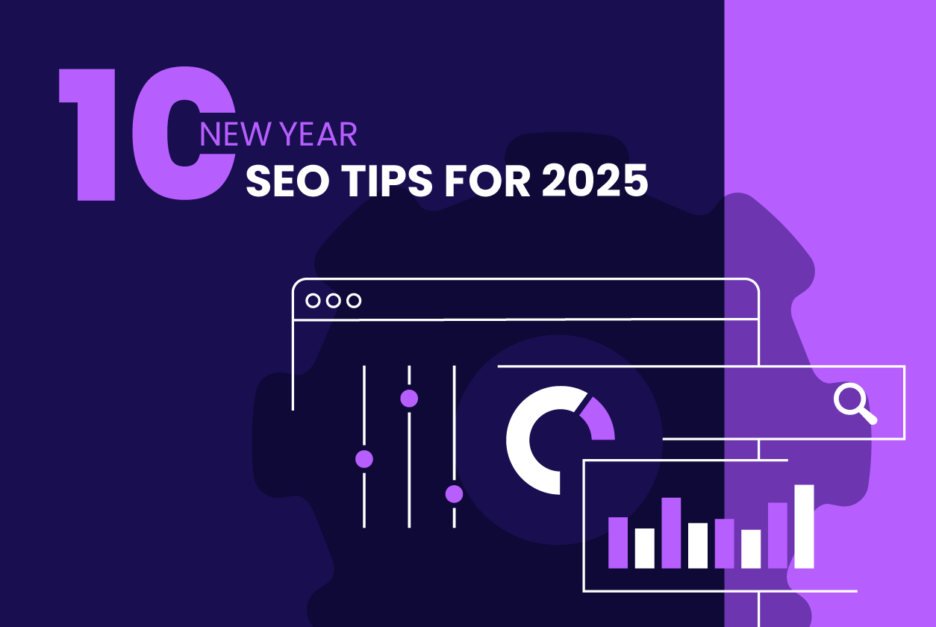Happy New Year!
As we enter 2025, many marketers are reflecting on search engine optimization (SEO) and how it can boost rankings, drive traffic, enhance brand visibility, and ultimately connect with customers.
With AI reshaping search, Google’s core updates continuously shaking things up, and best practices evolving daily, staying ahead can feel challenging. However, the more things change, the more they stay the same. There are still plenty of opportunities to improve your SEO in 2025 by focusing on the fundamentals while staying mindful of technological advancements.
At TopRank Marketing, we’ve been SEO pioneers for over 20 years, so we’re well versed in adapting to changes while leveraging proven strategies.
To help you succeed in the year ahead, we’ve compiled 10 essential tips. Follow these to set yourself up for SEO success in 2025.
Want more expert guidance? Check out our on-demand webinar, SEO Glow-Up!
Our 10 new year SEO tips for 2025
#10. Get an Advance Keyword Glossary That Is Useful in Planning
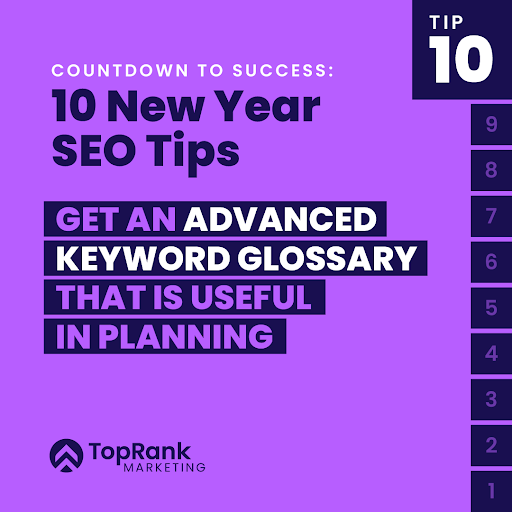
Let’s face it, most keyword glossaries lack utility and are often ignored, but a well-designed glossary can be invaluable in content planning. By incorporating advanced data like search intent, funnel stages, and competitor rankings, you can identify terms that drive qualified traffic rather than zero-click placements.
With 52% of Google searches being informational, and AI features increasingly answering queries without visits, it’s important to focus on keywords that offer real traffic opportunities.
#9. Prepare to Brag
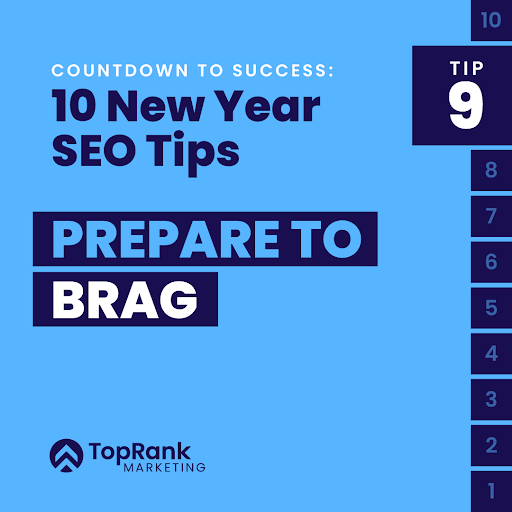
There’s nothing wrong with bragging about your achievements. If you haven’t already, set clear goals and KPIs to maintain your focus and measure progress consistently.
Define measurable objectives like organic traffic growth, click-through rates (CTR), keyword rankings, and organic conversions to track the success of your SEO strategy.
#8. Find the Question Behind the Query
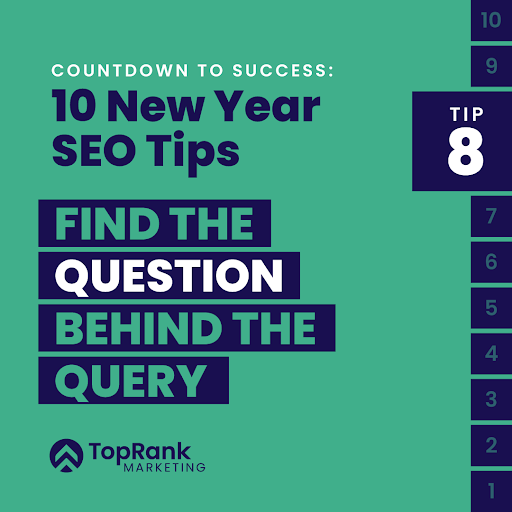
SEO is all about providing value. To do this, focus on your audience’s true search intent, not just their keywords. I say again, not just their keywords.
Prioritize user intent in your research and enhance it with a topical map that addresses diverse buyer needs, offering a clear strategy to connect your content.
#7. Shine Up Your Most Visible Content
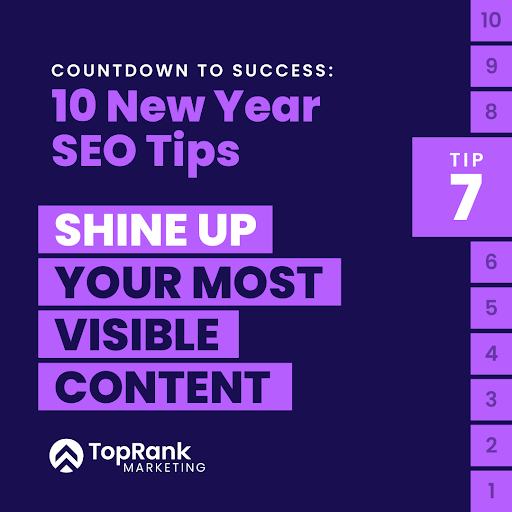
When was the last time you revisited older content? Since both your audience and search engines value fresh content, it’s important to audit on a regular basis.
Update your most visible content by ensuring your brand POV is accurate, statistics are relevant, adding new insights, enhancing the format, and updating calls to action with a recent gated asset or relevant further reading.
#6. Learn and Leverage a New Tool
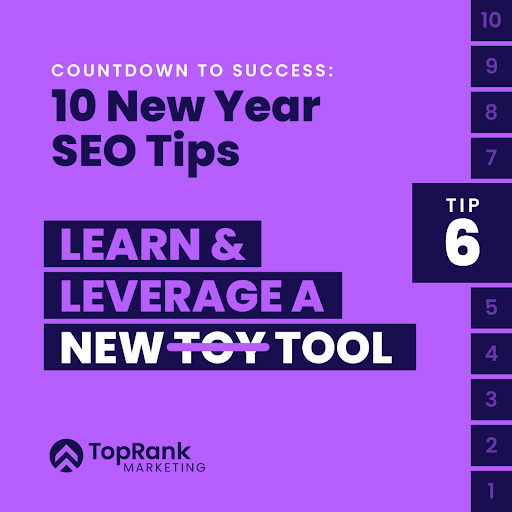
Artificial intelligence isn’t going anywhere anytime soon. As the technology evolves, so do its applications, including site optimization for marketers.
While there are plenty of options to try, we recommend SERanking and Google Ads Keyword Planner for evaluating pages of content for contextual relevance.
#5. Publish Optimized Content
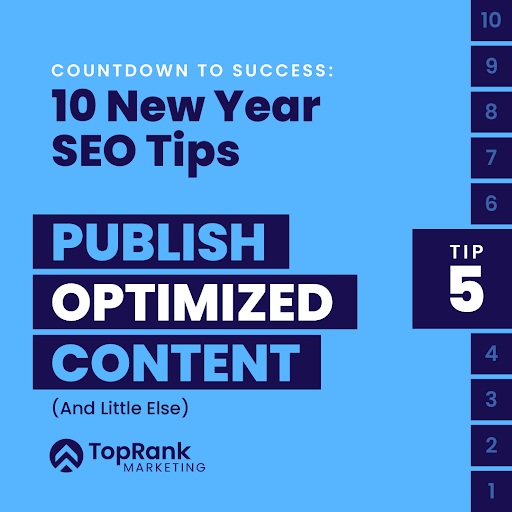
Will your content rank high on search engine results pages (SERPs)? Not if it isn’t impactful.
To create impactful content, focus on topics that resonate with both your audience and search engines. To maximize visibility, prioritize relevance and depth, and ensure your strategy aligns with solution-oriented topics and semantic keywords.
#4. Check the Foundation: Monitor and Maintain Your Technical Optimization
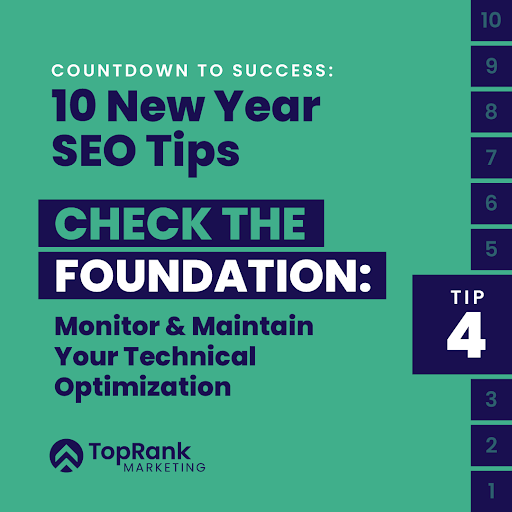
Are you completely sure your website is technically sound? An optimized website is essential for a seamless user experience and improved search engine rankings.
To ensure optimal performance, focus on key elements such as page speed, crawlability, mobile-friendliness, and schema markup implementation.
#3. Prioritize E-E-A-T
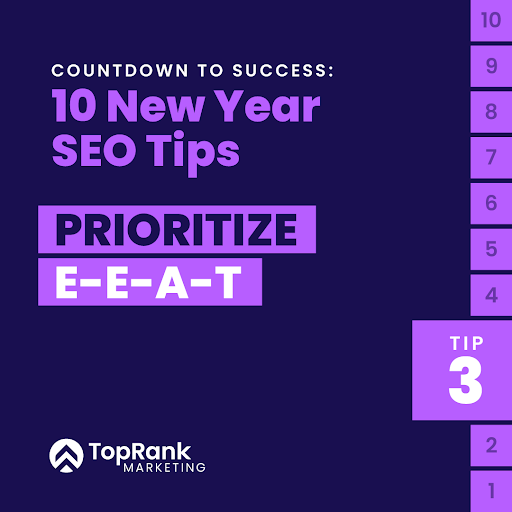
As Google continues to dominate market share among search engines, it’s more important than ever to prioritize its E-E-A-T principles: Experience, Expertise, Authority and Trust.
To achieve this, focus on highlighting human authorship and expertise in your content by tackling real challenges, adding author bylines, and double-checking that your content adheres to these principles. At TopRank, we regularly conduct E-E-A-T audits to assess performance across these four categories of signals.
#2. Adapt to Search Generative Experiences (SGE)
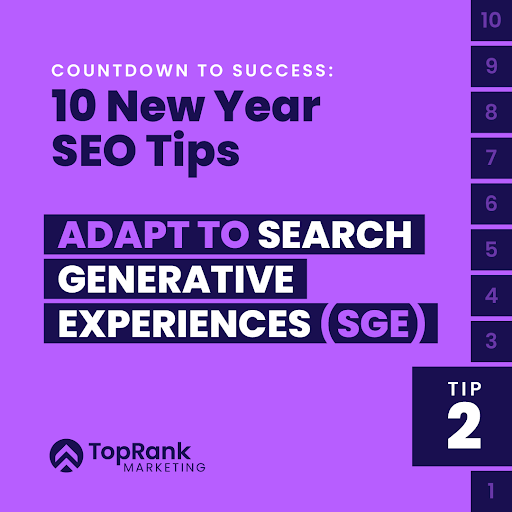
If it hasn’t already, your search traffic is likely to shift due to Search Generative Experiences (SGE) and AI Overviews in SERPs.
To get ahead of the curve, optimize your bottom-of-the-funnel pages, prepare for improved e-commerce functionalities in Google’s ecosystem, and ensure you’re set up to track traffic from search generative engines.
#1. Build a Strong Link Profile
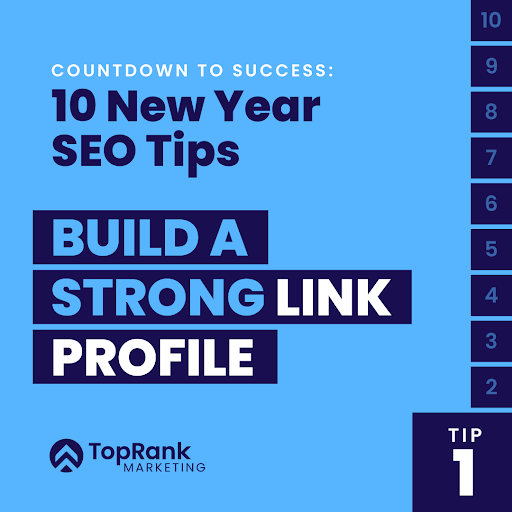
Ready to significantly improve your site’s performance? Internal linking and backlinks from reputable domains can make it happen.
To build your link profile and site credibility, try strategies such as publishing original research, engaging with guest bloggers, maintaining internal links regularly, and updating calls to action.
To your success in the new year!
While following these tips can certainly help move the SEO needle in your favor, they can still require a significant amount of time and resources, as well as additional expertise to implement and advise effectively.
Contact us today or request a free SEO scorecard to learn more about our services and see how you compare to your competitors.
